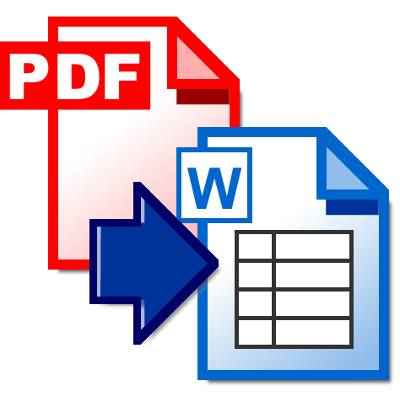Ferrum Technology Services Blog
How to Convert PDFs to Word Documents
 Have you ever been frustrated by not being able to edit information locked up inside of a PDF? Now, with Microsoft Word 2013, the issue is resolved, making it super easy to edit text, tables, and graphics within a PDF file.
Have you ever been frustrated by not being able to edit information locked up inside of a PDF? Now, with Microsoft Word 2013, the issue is resolved, making it super easy to edit text, tables, and graphics within a PDF file.
Many times, we'll have access to a PDF document without the original that it was created from, so we're not able to make any edits that we may want to. For example, if we're sent a PDF from a client and want to edit it in any way, we're not able to without them also sending the original document that the PDF was created from. Thankfully, Microsoft answered this issue with a new PDF converting feature within Word 2013.
Good Intelligence recently released a report entitled "Mobile Biometric Security - Market Forecast Report 2013 - 2018" which predicts that there will be over 3.4 billion people using mobile devices employing biometric technology by 2018, and by 2017 they estimate that almost one billion mobile devices will use fingerprint sensors. With this biometric security evolution, buttonless sensors built into touchscreens will become common. Sales generating from these trends will include multi-factor authentication (MFA) and payment services, which is estimated to be an $8.3 billion industry by 2018.
It's a super simple process.
Step 1: Open the PDF file with Word 2013.
Step 2: Marvel at what just happened.
Step 3: Open another PDF file with Word 2013, just to verify that it works.
Step 4: Repeat step 2.
Step 5: Repeat steps 3 and 4 until you're fully satisfied with this brilliant feature.
In all seriousness, really all you have to do in order to convert a PDF to a Word document is open the PDF in Word. Word 2013 automatically converts text, images, tables, etc. from the original PDF file to editable text, images, tables, etc. You can either open the file from within Word (File > Open), or by right clicking the PDF file and choosing Open With > Word. After Word opens, an alert will pop up that will notify you that the conversion may take some time, and that it may not be a picture perfect conversion in regard to the document's format. Just click OK, and Word will get to work.
You may notice that the converted file is, in fact, not a perfect representation of a PDF formatting. However, you can easily move images and text back to where you'd like them to go. Even if the formatting is compromised, the major benefit of this feature has been achieved; you are now able to make any edits that you'd like to the file.
After you make your edits, you can then save your DOC file, or export your edits to another PDF. Simply click File > Export > Create PDF/XPS and save the file to wherever you'd like it to end up on your system.
Don't get frustrated any longer by not being able to edit PDF files. Let Microsoft Word 2013 do the work for you! If you have any questions about how this works, or can't seem to get it to work for yourself, give us a call at (847) 697-3282. We'll walk you through the process so that everyone in your office can marvel at your genius.
